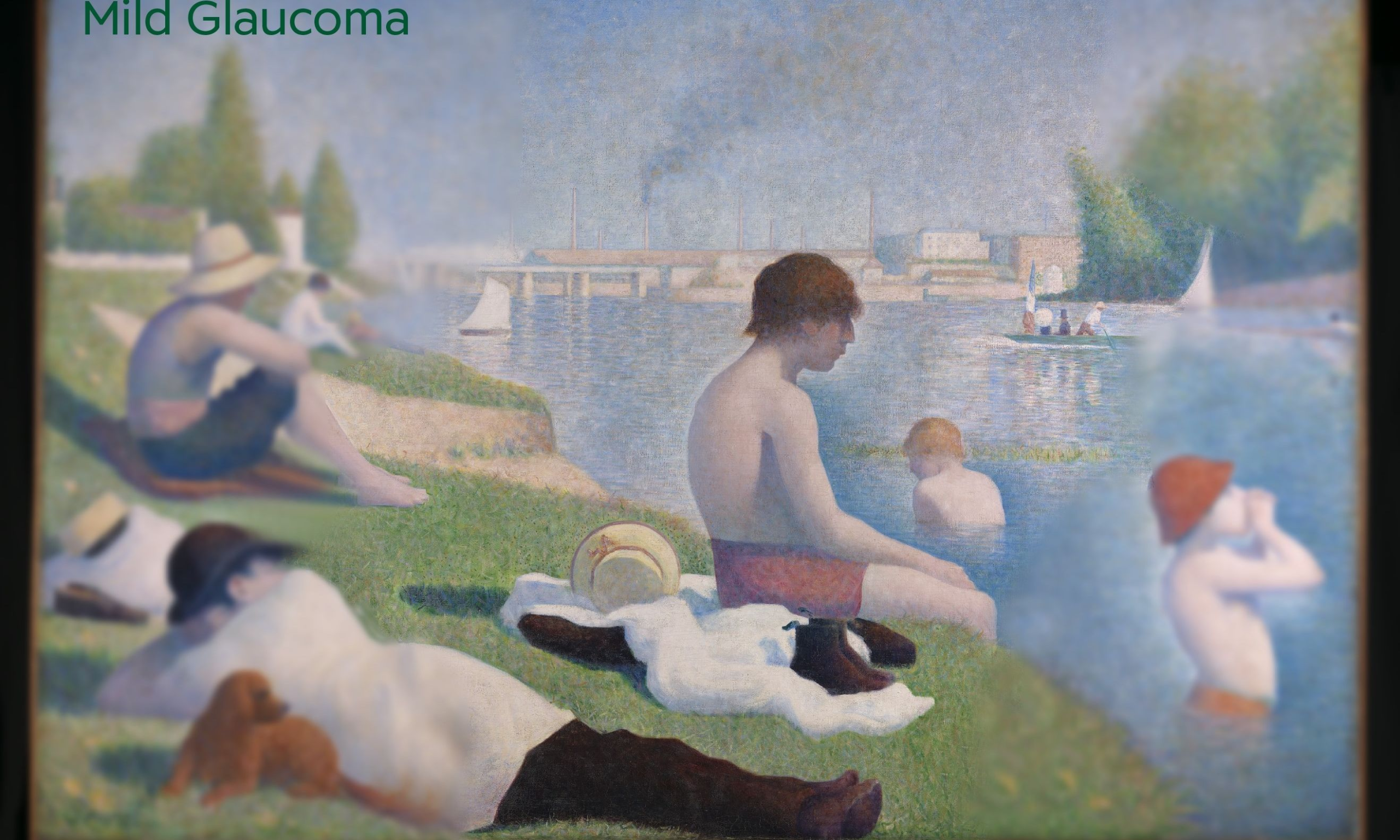Bathers at Asnières (1884) by Georges Seurat (as seen by someone with mild glaucoma).
Courtesy Specsavers
The UK optician Specsavers has teamed up with the National Gallery in London for a clever campaign highlighting the varying stages of glaucoma, an increasingly common eye condition where the optic nerve between the eye and the brain becomes damaged. Five very famous paintings—including The Supper at Emmaus (1601) by Caravaggio and Venus and Mars (around 1485) by Botticelli—have been modified to simulate the varying stages of glaucoma (the pictures appear as seen through “the lens” of someone with glaucoma, replete with blurred spots and missing details). The other works featured in the campaign are: Bathers at Asnières (1884) by Georges Seurat, Mr and Mrs Andrews (around 1750) by Thomas Gainsborough and The Ambassadors (1533) by Hans Holbein the Younger. Crucially the National Gallery points out that “access for blind and partially sighted visitors includes audio descriptive content of key works in our collection as well as a series of events entitled ‘Audio Art: Utterly in the picture’.” Giles Edmonds, the clinical services director at Specsavers, says in a statement:“Seeing the loss of details in these famous works highlights just what an impact this condition can have, not just when viewing beautiful art, but also in your day-to-day life.”

